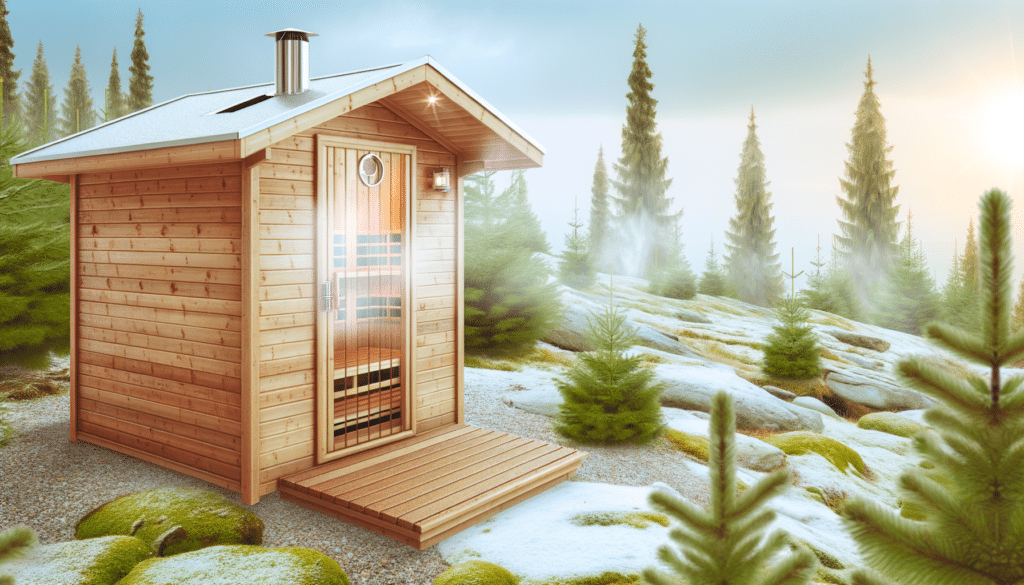Ultimate Relaxation: Transform Your Backyard with an Outdoor Sauna
Outdoor saunas offer a rejuvenating escape by merging the warmth and relaxation of traditional sauna experiences with the natural beauty of the great outdoors.
Benefits of Outdoor Saunas
Beyond the evident appeal of an outdoor sauna, these installations come with a variety of benefits for both physical and mental well-being. One of the primary advantages is the boost in cardiovascular health. The heat from the sauna causes the heart rate to increase, mimicking the effects of moderate exercise. As the body works to cool itself down, blood vessels dilate, improving circulation and reducing blood pressure. This regular increase in blood flow can lead to long-term cardiovascular benefits.
Moreover, the exposure to high heat helps to relax muscles and soothe aches, making outdoor saunas an ideal post-workout retreat. The heat therapy can also assist in alleviating chronic pain conditions such as arthritis. Additionally, the detoxification process promoted by sweating can enhance skin health and clarity.

A Connection with Nature
One of the most distinctive features of an outdoor sauna is the connection it fosters with nature. Unlike indoor saunas, outdoor saunas allow users to enjoy the sights, sounds, and scents of the natural environment. This connection is not just aesthetically pleasing but also tremendously therapeutic. Studies have shown that spending time in nature reduces stress levels and enhances overall mental clarity. An outdoor sauna amplifies these benefits by providing a serene spot for contemplation and relaxation amidst nature’s tranquility.
Additionally, taking a sauna bath outdoors, especially in a garden or by a lakeside, heightens sensory experiences. The fresh air and natural surroundings complement the soothing warmth of the sauna, creating a unique form of leisure that indoor saunas can’t replicate. The ability to step out and cool off naturally adds another layer of enjoyment, enhancing the overall experience.
Design and Build Considerations
When planning to install an outdoor sauna, there are several design and build considerations to keep in mind. The location is crucial – it should be accessible yet offer privacy. Consider using natural barriers like trees or hedges to enhance seclusion. The structure itself should be built with durable, weather-resistant materials such as cedar or thermally modified wood. These not only stand up to weather conditions but also add a rustic charm.
Proper insulation is essential to ensure the sauna retains heat efficiently. Additionally, ventilation systems need to be carefully designed to maintain air quality. Another significant aspect is the heating method – whether you choose a traditional wood-burning stove or an electric heater. Both have distinct advantages, with wood stoves offering a more traditional experience and electric heaters providing greater convenience.
Maintenance and Care
Maintaining an outdoor sauna involves regular care to ensure longevity and optimal performance. Routine cleaning is vital to remove any sweat residues or debris. The wood should be treated periodically to prevent degradation and maintain its appearance. It is also important to check for any signs of wear or damage regularly, especially in the roofing and insulation, to address issues before they become major problems.
Ventilation ducts and heaters should also be inspected and serviced as needed. For those using wood-burning stoves, cleaning the chimney to prevent soot buildup is a necessary task. Regular maintenance not only ensures the sauna remains functional and safe but also prolongs its life, providing years of relaxation and enjoyment.
Community and Social Benefits
Outdoor saunas also offer significant social benefits, serving as a communal space for friends and family. These installations can become a focal point for gatherings, facilitating bonding and shared experiences. The relaxed environment promotes open conversation and fosters a sense of togetherness. Furthermore, many cultures around the world use saunas as a social activity, highlighting their importance in communal traditions.
Whether used for solitary relaxation or social interaction, the versatility of outdoor saunas makes them a valuable addition to any outdoor space. They provide an unmatched combination of health benefits, natural connection, and social opportunities, making them a holistic investment for enhancing quality of life.
